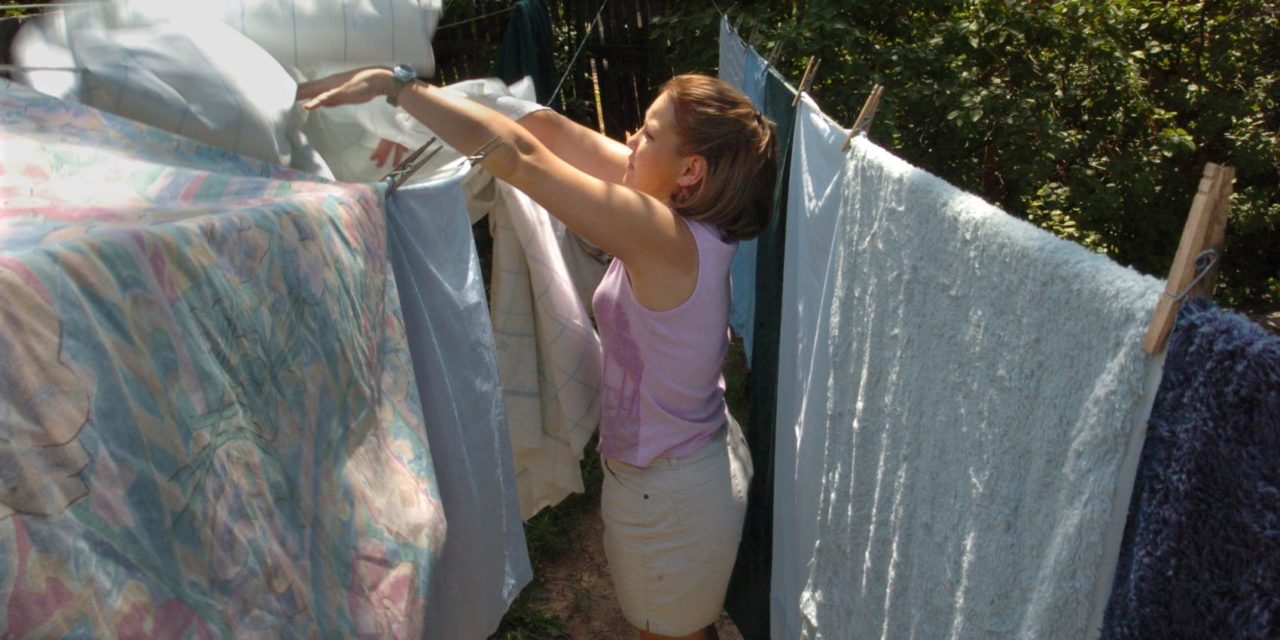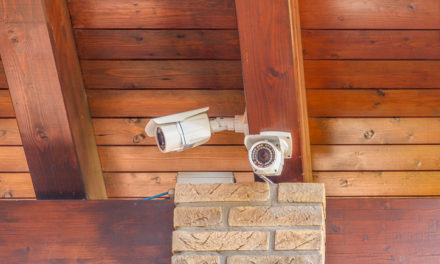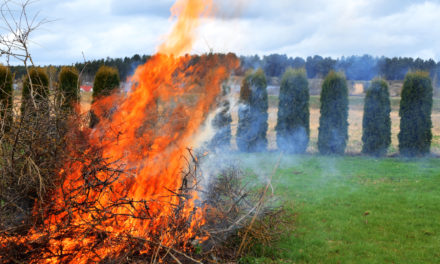My fascination with clotheslines began when, as a child, I would airplane my arms and soar between sheets and shirts, pants and unmentionables. The clothes hung daily from my grandma’s wraparound porch and provided endless entertainment. When it rained or snowed, the wet wash moved inside to the home’s big bathroom, which doubled as a laundry room.
My appreciation for clotheslines started when I got my first apartment, sans dryer. My choices were to trek to the laundromat, buy a drying rack or rig a clothesline. I favored the last.
My love of clotheslines came when the backyard of the first house my husband and I bought had old rusty metal poles with wire strung between them. After a few repairs and new plastic cord, it was good to go.
Our current home also has an old-fashioned clothesline that I now can’t live without. I’ve been known to hang a load outside in early spring, with snow on the ground beneath.
The clothesline has turned laundry into my favorite household chore. As weird as it sounds, I sometimes have longed for more laundry, just so I could spend more time hanging clothes outside.
There’s nothing like sleeping on crinkly sheets and pillowcases that release the smell of the fresh, clean outdoors. Or pulling on a wind-whipped T-shirt or forgoing fluffy towels for wrinkly ones.
That air-dried scent has been familiar to 78-year-old Esther Kisamore her whole life.
“I like the way the clothes smell, and I like being outside hanging them,” Kisamore said. “You get to see what’s going on outside, and sometimes it gives you an opportunity to visit with neighbors.”
Along with the au natural dryer, Kisamore also has had a line strung in her living room for the 27 years she’s lived near downtown Colorado Springs. It’s a backup for when it’s cold outside or when she’s hand-washed a few items.
“It’s handy,” she said. “I try not to leave my underwear on it when I know people are coming over.”
The energy and cost savings of drying clothes using air, not electricity, also appeals to Kisamore, a longtime environmental sustainability advocate.
“It costs a dollar a load for a dryer at the laundromat,” she said. “I’ve probably used a dryer three times in the past year. I’d rather save the quarters and use them on something else.”
Anytime Kisamore can do her part to go green, she makes the effort.
“If I can use a clothesline, a solar oven or a recycling bin, I do it,” she said. “It feels good because you know you’re doing a little something for the environment.”
The traditional outdoor clothesline is now more of a rarity than an essential.
Many homeowners’ associations even ban them.
“They were never a hot topic, but now and then we have an issue, and it’s because somebody didn’t want to look at somebody’s personals out their window,” said Linda Warren, president of The Warren Management Group, which works with 50 homeowners’ associations in the Pikes Peak region.
Under an energy-efficiency measure legislators passed a decade ago, however, homeowners’ associations must allow retractable clotheslines.
They come in many styles, from collapsible umbrella-shaped units to square free-standing models to small mounted disks with a rewindable cord.
“We can work with people on retractable lines, as long as it’s not always up and left hanging full of clothes,” Warren said. “It’s a fair compromise, and it’s good there’s still an alternative and option for people. Who doesn’t love a towel that’s been fluffed out in the wind?”
It’s not a priority for everyone.
“Clothes smell amazing when they get dried outside, but I don’t have the time or energy to do so,” said Samantha Klingenberg, president of the Old North End Neighborhood Association, which supports historic preservation of the stately homes in its neighborhood north of downtown.
Her association doesn’t take up the issue of clotheslines. “That’s a personal thing,” Klingenberg said.
Not everything turns out smelling like roses after air drying, though. Smoke from wildfires can permeate clothes flapping in the breeze, I’ve discovered over the years.
Strong winds sometimes fling clothes to the ground or into other yards.
And if temperatures dip too low, still-wet clothes can freeze as stiff as if they had been sprayed with a whole can of starch.
That brings us to the clothesline cousin: ironing.

 Photo Credit: Jerilee Bennett.
Photo Credit: Jerilee Bennett. 



Comment on: Stay Eco-Friendly with Clotheslines